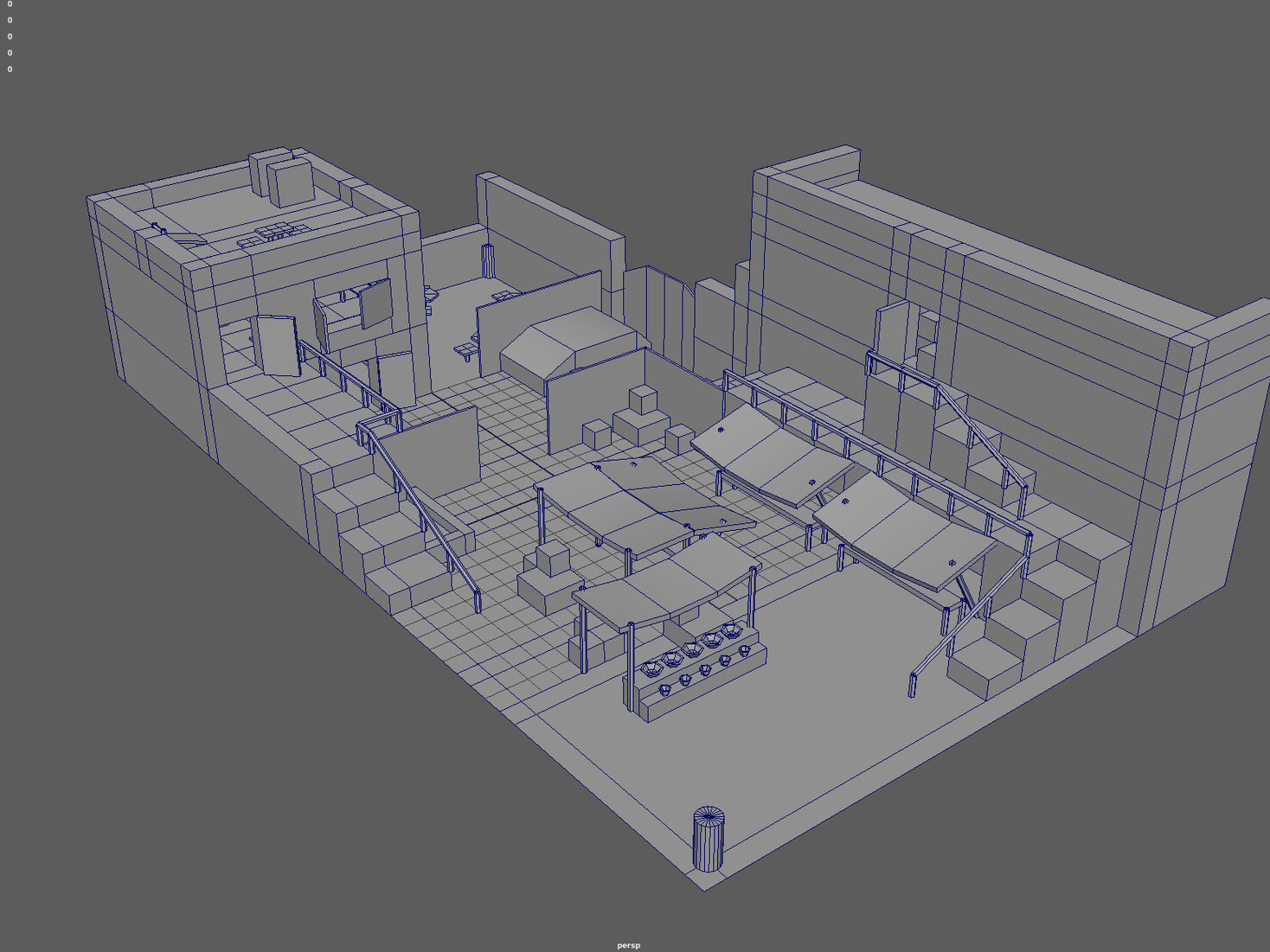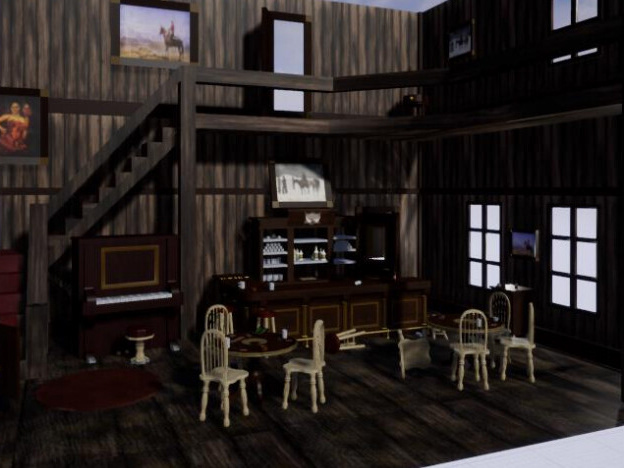Project Brief
This project was a student team effort created over the course of a weekend. In 2021 the prompt was "Lost and Found".
Our final submission focused on a Penguin, named Pongo, raiding a museum to re-claim their lost heirloom egg.
The gameplay revolved around searching the museum for the egg, avoiding or defeating security officers, and escaping with the precious heirloom.
Project Synopsis
The Adventures of Pongo was a third person item hunt where players had to avoid or overcome museum security and recover their stolen prized egg.
Players entered a world which was a play on Planet of the Apes, but instead of apes society had been taken over by sentient penguins.
Players had the ability to walk, run, jump, dive, and to pick up almost every object in the museum and throw it to defend themselves from security.
The player and all NPCs had a fall down mechanic where they would enter a ragdoll state when hit with an object throw by the player, or if they fell over one another.
Furthermore, all assets were fully destructible within the environment if they received damage from being throw, or having an object or NPC thrown at them.
Roles and Responsibilities
On the project my main roles were level design, engine implementation of all assets, and producer.
Working as both the level designer, producer, and being responsible for the implementation of art into the game engine allowed me to keep our team as agile as possible over the weekend jam.
Producing the team in combination with being the level designer gave me the visibility needed to inform and unblock our artists via greybox blockouts. Additionally, I was able to remain close enough to our programmers to understand, and create use cases for, our testing requirements.
Level Design - Ground Floor
As the level designer I plotted a layout for the environment that would offer players plenty of potential for the two key aspects of gameplay. These were the cat and mouse between the player and security, and the hunt for the egg objective.
To achieve this I set up an asymmetrical figure eight layout on the ground floor. This used a large center foyer to give players room to outmaneuver security forces and smaller sub rooms which included a higher density of throwable assets for players to knock down security.
The central foyer had a large set piece added to stop security pathfinding directly toward the player, and to break player line of sight around the area. This promoted the player to engage in searching more closely for the heirloom egg.
The bottom floor was user as our testing area for ragdolling, throwables, picking up items, and quickly testing the random location spawning of the egg.
Level Design - Upper Floor
Stairs were added to the back of the foyer where they were clearly visible to players from the start of play. These stairs led to the upper floor which comprised of a central ring hallway and three side rooms.
The central ring made the upper floor visible from the ground floor as well as offering players a fast way of changing floors and evading security.
The upper floor was made far tighter, and the spaces allowed security to trap the player more easily. This was done so that as the player climbed the floors, their challenge would increase further. In our initial designs there were three floors and the objective egg would take pride of place on the upper most floor in one of five spots. Due to time constraints we removed a floor but kept the difficulty increase.
Once the upper layout was created I standardized door and hallway sizes between the floors, and added window and ceiling panes to ensure the level lighting supported the gameplay requirements. Prior to this addition our level was very dark, and we didn't have art or design time available to set up point lights in each room.
Creating Distinguishable Environments
At this stage in development our basic environment assets were available. The assets were created in a modular pack which allowed me to iterate the scene faster and rescale rooms with the same ease as blockout.
I began dressing each room with greybox assets as though it were a museum exhibit for a specific theme. This made each room visually distinct, in both content and layout.
The dressing was condensed into an asset request list for our art team.
Each room was made denser than any real world equivalent to support hiding the objective egg and for more throwable object choices.
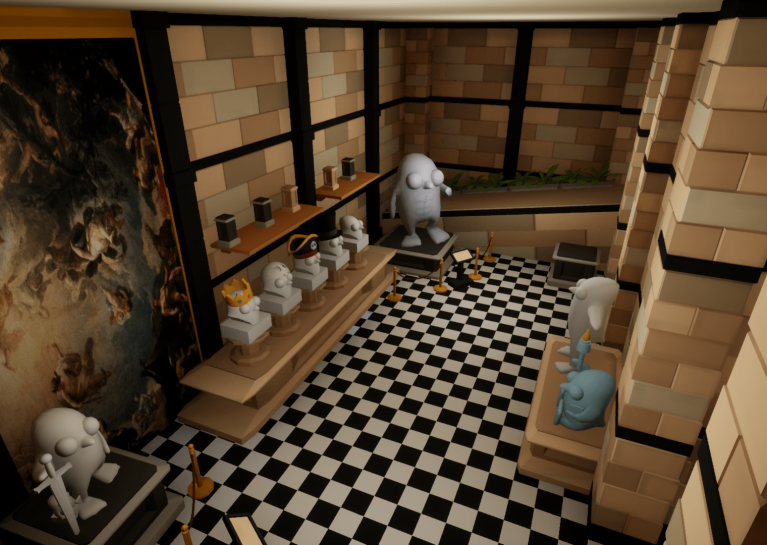



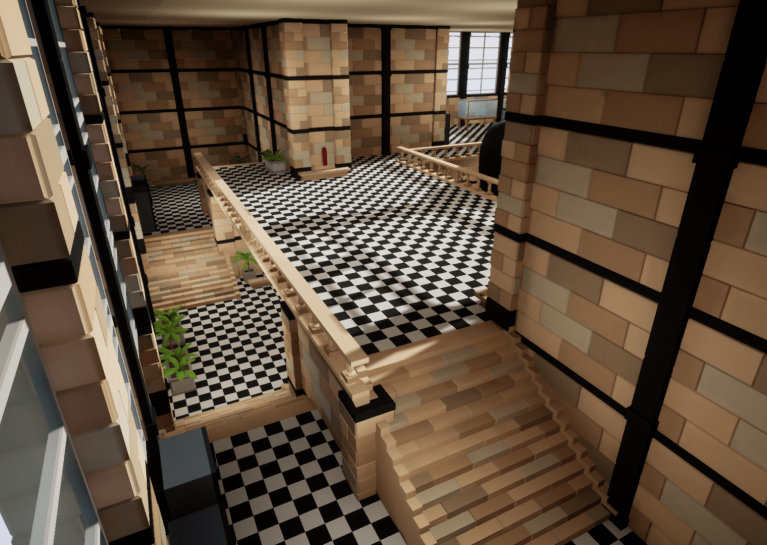
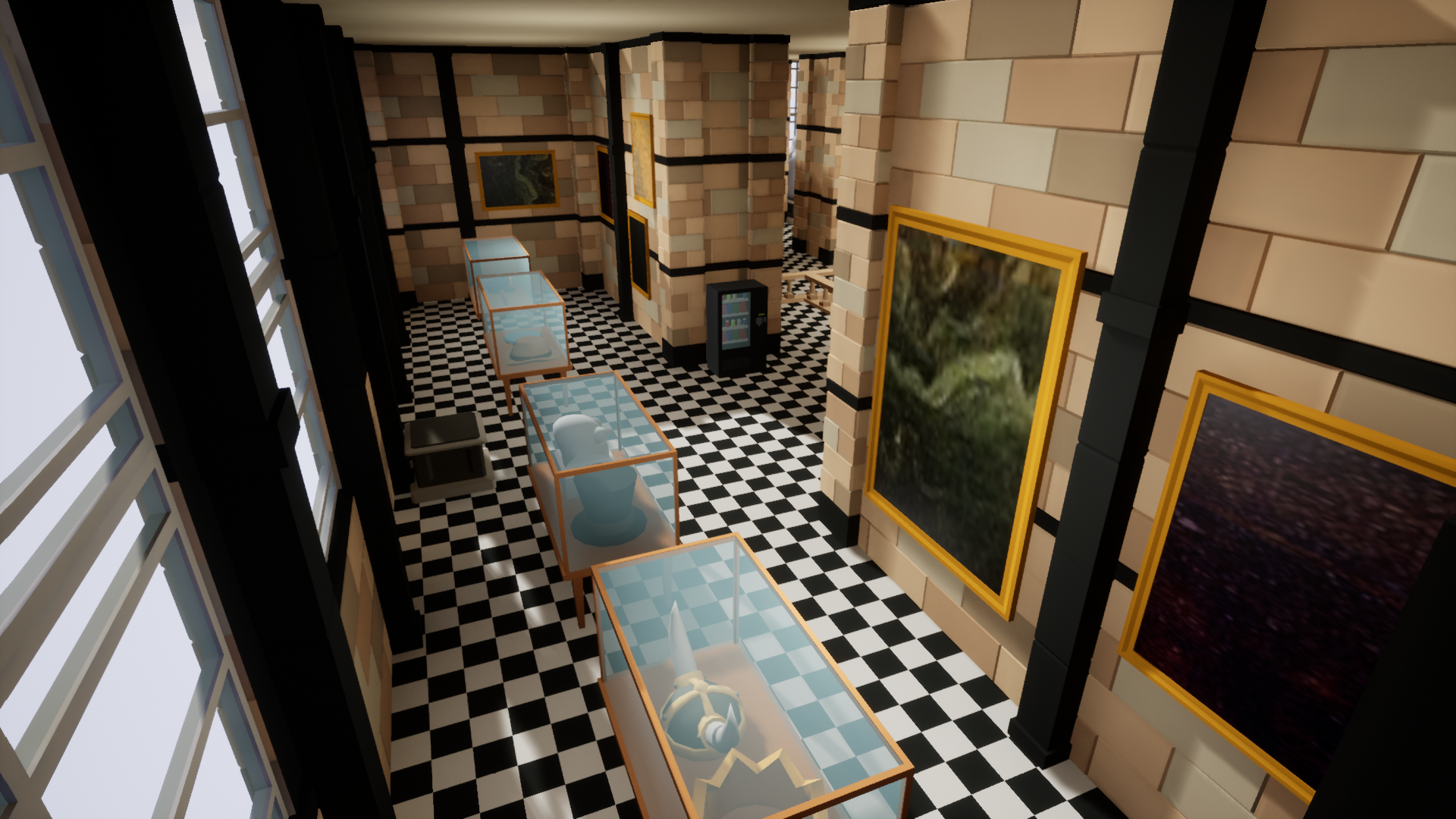

Iterative Cycles
As art assets were ready for us, I imported them to our project and returned to each room within the level to perform a third pass on its layout and visuals. Working in a series of passes made each faster than the last and imbedded iteration into our development timeline.
Thanks to the setup on our assets, the mesh and materials could be exchanged whilst retaining the position and rotation, further improving the speed at which iterative cycles could be completed.
After this third cycle I locked down the level layout and began work on dressing the environment with lower priority content such as the wall paintings and smaller, decorative elements.
Density and Navigation Testing
From the beginning of the project we had aimed to be ready for a full team testing session by the 36 hour mark. This allowed us a time window in which we could focus entirely on bug fixing, polish, and further iterations if needed.
I began testing each room to see how well players could evade or defend themselves against security forces. We identified that the player could easily overcome security due to pathfinding issues. This resulted in several changes to throwable density in the rooms and minor layout alterations.
Bug Testing
In our final 4 hours I turned my attention to trouble shooting any issues I could discover in the enemy navigation or collision. To do this I tested each room with different amounts of guards trying to navigate it at a time.
We found that if too many guards chased the player into a tight area they could become trapped on one another.
Submission
We assessed the remaining bugs on the project and felt we had a stable enough submission to complete the jam. Although there were still issues with objects inside display cases exploding, or guards trapping themselves on one another; the issues were deemed low enough priority or rare enough in replication that we could submit and complete the jam.
Project Evaluation
Although we achieved what we set out to in the jam there is still room for improvement and expansion on the project.
Returning the project to its initial multi-floor intentions and making the flow between rooms more linear would be the first addition given more time. Adding per-floor sub-objectives which, upon completion, would grant access to the floor above would also improve the overall experience.
Despite the remaining bugs and expansion plans, we were proud as a team of what we had created in such a short time period. We didn't have very much room for mistakes, and thankfully hit very few issues. Budgeting and planning with some buffer room for the unexpected would also be a point of improvement for future work on the project.
